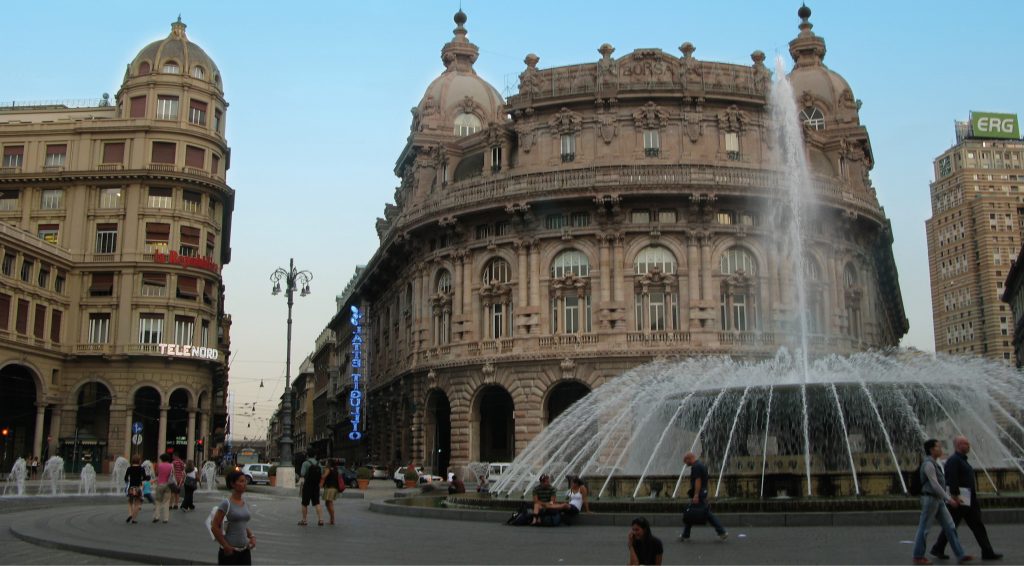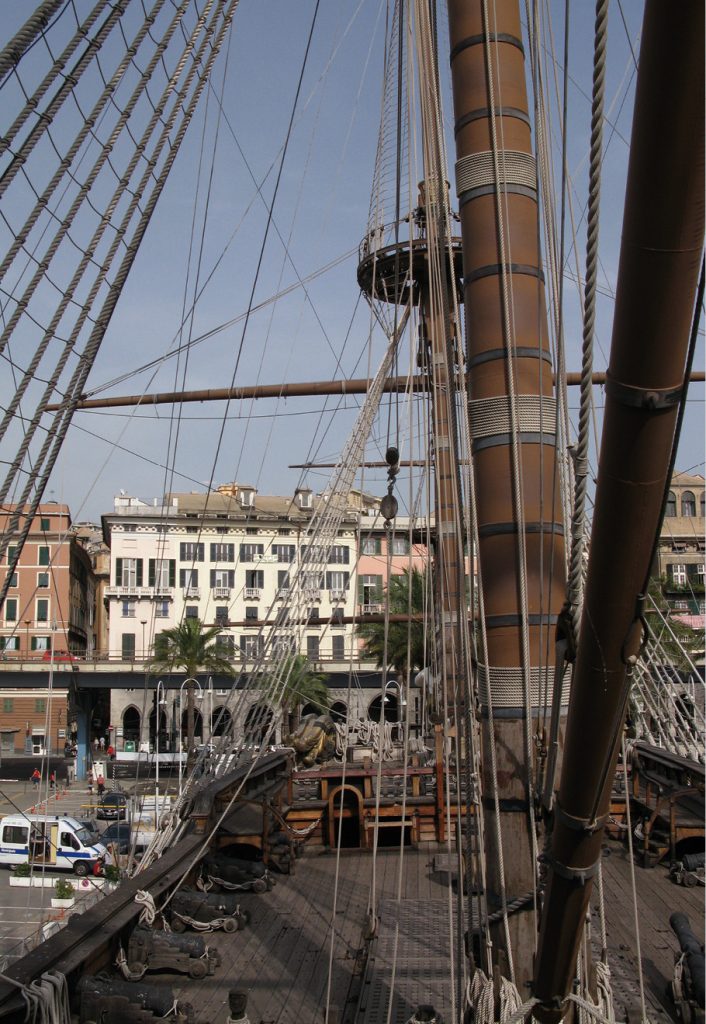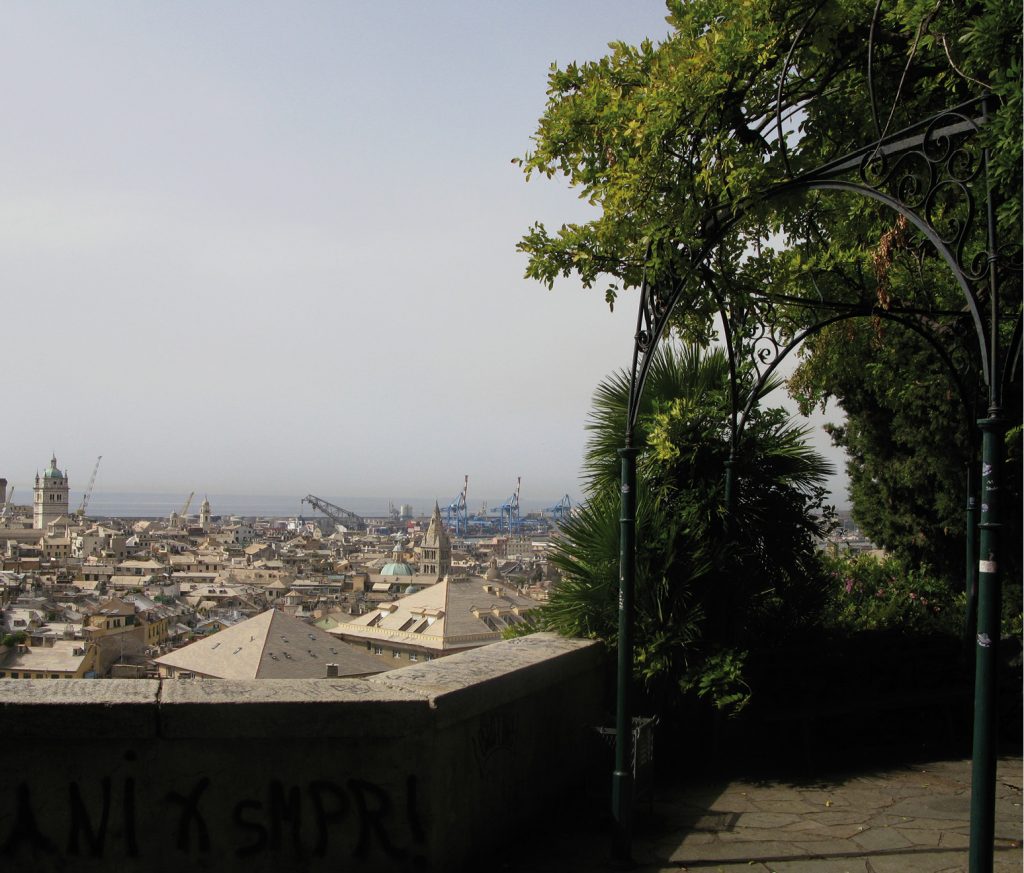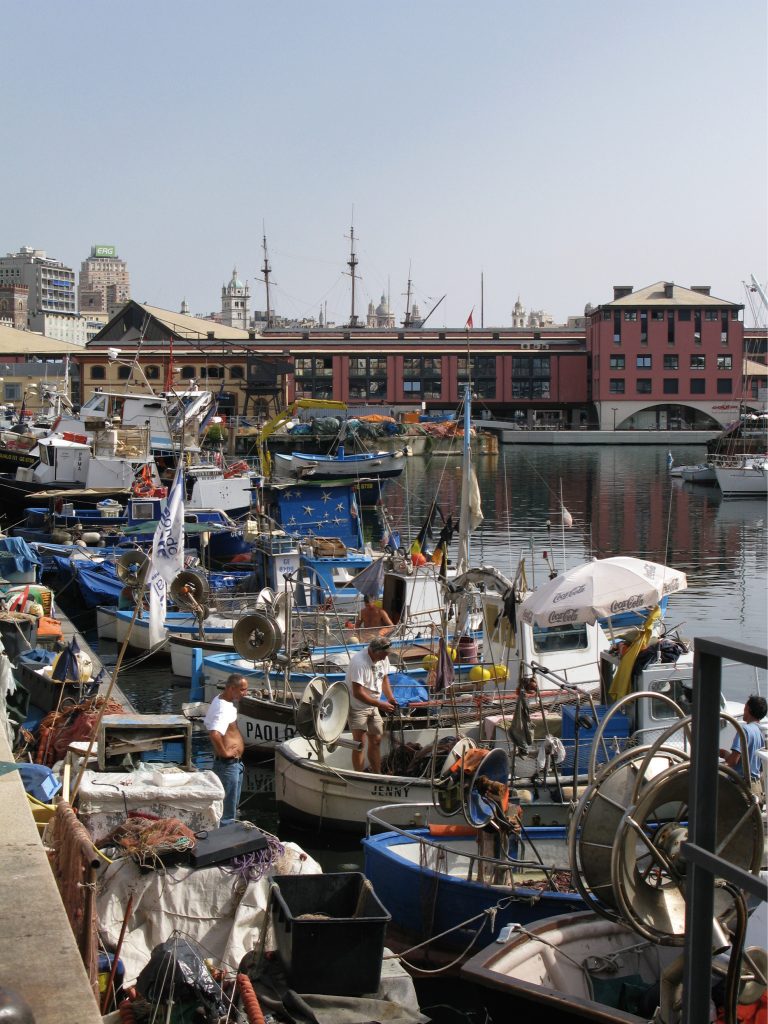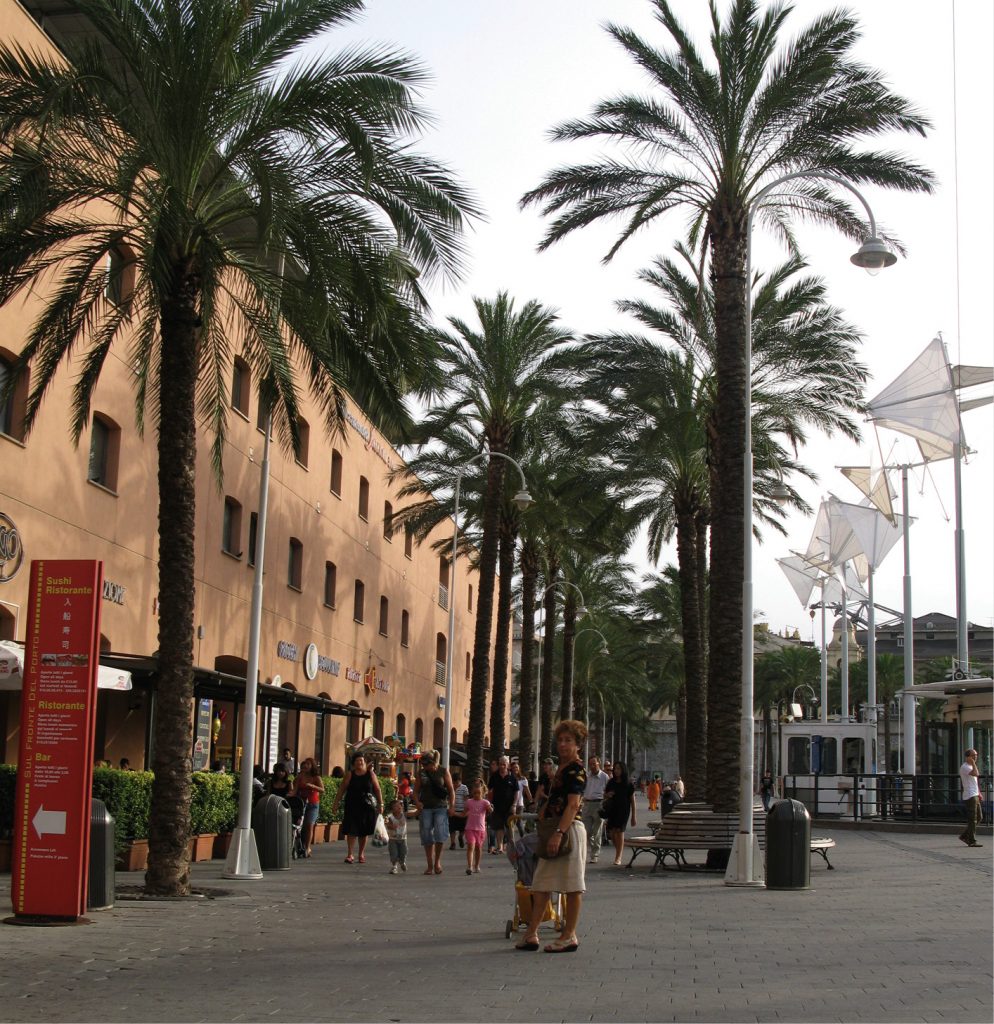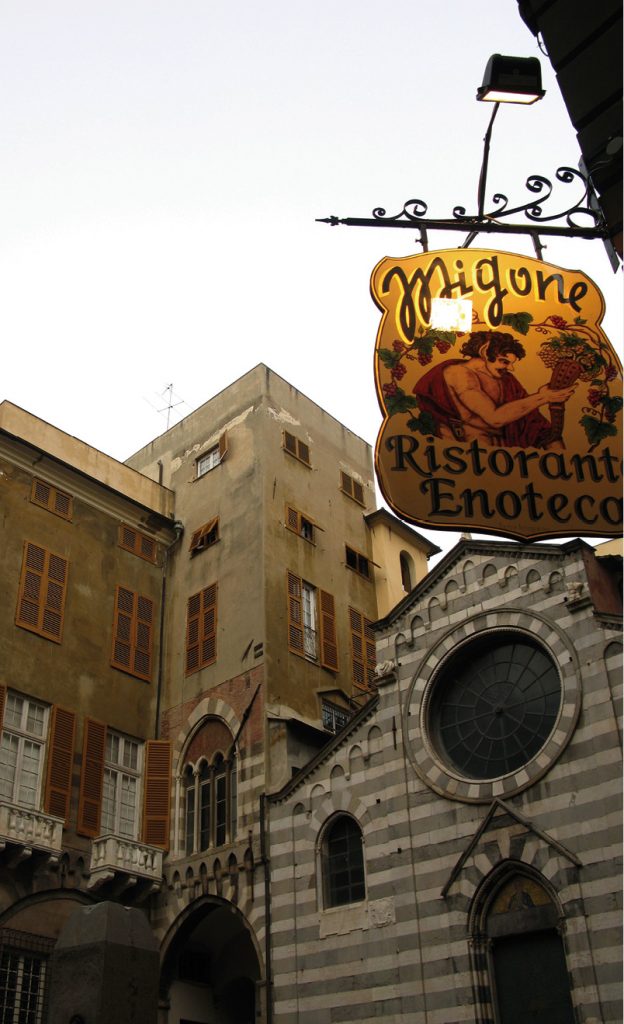With its dramatic geography, recent cultural renaissance and fascinating backstreets, Francesca Unsworth explains why it’s time to fall in love with this dynamic city
Genova never quite seems to make it onto the traveller’s list of desirable places to visit in Italy. Tucked into the crease of Italy’s northwest coastline, the Ligurian capital struggles to compete with the quainter historical towns dotted about northern Italy, but there’s something about this city that I find gritty, edgy and appealing. It may not boast the artistic heritage crammed into Florence or the awe-invoking 18th-century palazzi that have the hordes descending on Venice, but there’s a pervasive dynamism and a sense of modernity and movement that make this a more liveable city than some of its competing tourist destinations.
City of adventurers
“Girare è la cosa più bella” (travelling is the most beautiful thing), said the aged market stall vendor as I explained why I was visiting Liguria’s capital city, and incidentally, his hometown. As an intrepid journalist ruthlessly searching for clichés upon which to base my judgement of the city’s citizens, this quote was promptly scribbled down in evidence. So with that, I jumped to the conclusion that these Genovese folk had clearly inherited that adventurous nature that inspired Genova’s most famous personage, Christopher Columbus. This was precisely the attitude I expected from locals of one of the most important port towns in the Mediterranean; descendants of seafaring folk, with a spirit of adventure and a curiosity that some of Italy’s more traditionally closed towns don’t offer so readily.
With all this in mind it’s hardly surprising that Genova has the rugged feel common to most dynamic Mediterranean port towns. It is a city that has struggled with its reputation both at home and abroad – a perception that perhaps stems from this edgy aura. The G8 summit in 2001 did it no favours when demonstrations turned nasty and a string of allegations of police brutality against protesters, along with the murder of a young anarchist, received extensive media coverage. But since winning the Capital of Culture award in 2004, and with it cleaning up both the city and its image, Genova seems now to be setting an example of modernity for other Italian cities, without neglecting its rich patrimonial past.
A sense of the City
Landing into Genova’s airport on a clear day offers a useful reference point for understanding the city’s geography. The runway lines the coast, making it either a truly traumatic landing for the paranoid flyer, or an exhilarating start to the quest ahead. Much like the rest of the rugged Ligurian coastline, once the sea hits the coast the land swiftly gains altitude, with craggy inclinations crowded with olive trees and vines protruding along the skyline. This is the land of the famed Cinque Terre, rustic pastel coloured towns perched on the sides of sea cliffs – the quintessential pictorial representation of the region. The tricky terrain makes a picturesque setting for towns dotted along the vast stretch of Ligurian coastline, but in the case of the region’s capital, this geographical peculiarity makes for a bit of a space problem.
The city sprawls along the coast horizontally, but battles with the increasing gradient as it spreads inland. For the modern city to develop outwards from the port, some of the houses had to be built on top of one another to make room. Some of the fanciest homes boast 180-degree sea views and are accessible by steep winding roads, which I can report make for a hair-raising experience when tackled at full throttle by a reckless driver busy typing a text message. I prayed for my life and hoped the navigational skills of the Genovese are still intact despite the generational gap between this young chap and his orienteering predecessors.
The more cautious opt for a handful of funiculars and public elevators to whisk them up to the elevated parts of the town, and from these points you can catch a perfect view of the buildings spilling out before you. Hop in the lift from Piazza Portello, and you’ll be whisked up to the Belvedere Montaldo in Castelletto, which offers a beautiful panoramic view of the slate-tiled roofs of Genova’s old city centre. Like the buildings, the roads are stacked on one another, held up by galleries and tunnels weaving throughout the town, which also based on personal experience, I wouldn’t recommend taking on foot, unless you actually enjoy inhaling toxic fumes.
Despite what its long list of museums and galleries might have you believe, a visit to Genova is more of a cultural experience than an awakening. There’s the Palazzo Ducale, once the home of the Doge of Genova, and the spacious Piazza de Ferrari, the church of San Lorenzo, all of which are incredible architectural feats, but it seems the spirit of the city is captured more in Genova’s porto antico and medieval centro storico.
The last two decades have seen a massive amount of cultural development take place in Genova, and it’s a point of pride for locals. To commemorate the 500 years since Columbus set sail from the city’s port to discover America, Genova celebrated 1992 with the unveiling of anarchitectural triumph from the acclaimed Italian architect Renzo Piano. When the city won the Capital of Culture title in 2004, large sums were pumped into the museums and into cleaning up the docks, a notoriously sketchy part of the town.
Now the palm tree-studded promenade along porto antico is a child-friendly open space to while away a couple of hours, or in my case, a sunny afternoon. A large sphere was conceived for the G8 summit in 2001, made up of glass windows with metal frames which forms an ecosystem housing rare plants. One of the old 19th-century cotton warehouses is now la citta dei bambini, a learning centre for children with an immense library on the top floor. Europe’s largest aquarium with a hypnotically fascinating seal tank is a must for visitors to the city, and also sits on this pristine dock.
Even if maritime history doesn’t float your boat, the Museo Galata, one of Renzo Piano’s designs, is worth a visit for its architecture alone. The glass façade of the museum with its skeletal shell, from a distance obscured in patches by palm trees is, despite its contemporary feel, housed in an ancient palazzo. Once you’ve lingered on the reconstructions of the galleys in real size and miniature, then fiddled around with the interactive bits for kids, a trip up to the roof terrace is the perfect vantage point for admiring the higgledy piggledy city.
At the time of writing, an interesting exhibition devoted to the exodus of Italians to America in the late 19th century tells of the treacherous journeys in subhuman conditions that were faced by emigrants. Tales are recounted and constructed from the letters and diaries of the voyages, and visitors can get a creepy feel for the experience thanks to the reconstruction of cabins aboard, from the dingy doctor’s cupboard to the coffin-wide bunk beds.
Take to the backstreets
After a visit to the sparkling seafront, the time has come to experience Genova’s darker side, and for me, the city’s highlight – its dank and spooky medieval centro storico, the largest of its kind. The tightly-packed streets, some barely wide enough to fit a bicycle, are a fascinating facet to the city, with its historical merchants and rustic holes in the wall selling local fried fish dishes or the ubiquitous farinata, a flat chickpea cake. You may see the odd rat scuttle down the alleyway, but follow the wider streets and you’ll be rid of the reckless rodents.
Even at midday on a bright sunny day, the labyrinth of streets keeps you cool and shaded from any sunlight, which may leave you puzzled as to the time of day were it not for the different personalities on the prowl at the changing hours. During the daytime, the streets crawl with grannies and kids and are lined with ceramic shops, spice vendors, fish stands and antiquities. When the shutters go down on the historic stores, the wine bars and nightspots are teeming with apero-slurping youngsters and the restaurants jammed with lively groups.
Venture through the medieval streets armed with some spending money and a camera, as there are a few notable addresses that are worth a visit whether it’s for the their perfectly preserved interiors, or for purchasing their wonderful nicknacks. Via Macelli di Soziglia specialises in gastronomy, from the fruity fresh olive oils of the region stocked by Francesca and Norma at Le Gramole (69r) to the wide range of stockfish from Casa dello Stoccafisso (Via Macelli di Soziglia 20), an iconic store stocking one of the town’s specialities – dried cod either underwater or rehydrated and ready to eat.
Disney for foodies
The unanticipated warm spell in September at the time of my visit sent me on the hunt for a pair of sandals to replace my completely inappropriate leather boots. As it turned out my budget and taste and those of the Genovese shopper don’t converge, we do, however, have the same taste for elegant ceramic pots (try Le Cermiche del Grifo on Via della Maddalena for instance). For high-end fashion Via XX Settembre and Via Roma are your best bet, where the well-heeled Genovese go to pick up their designer handbags and leather stiletto heeled boots, but in the way of sartorial impression, the stores leave little stamp.
If Genova’s clothes shopping is somewhat uninspiring a visit to the mercato orientale, the oriental market – known as such for its location on the eastern side of town rather than anything more exotic – will make up for any prior disappointments. This is Disney World for produce lovers. If it’s not to eye up varieties of food you may not have known existed, it’s to marvel at the colours and atmosphere of this vibrant indoor square.
Spices, fish, salumi and most abundantly, fresh fruit and vegetables lie in abundant piles on the market stands. As testament to the savvy nature of the Italian food shopper, names of produce are denoted by type or provenance rather than by generic name, and the bulk of the products seem to have been produced within a 70-kilometre radius of the city. This seems to be the essence of the city’s cuisine, a healthy reliance on locally-sourced produce, as the region boasts astounding examples of native varieties: the asparagus of Albenga, its purple artichoke and of course, the basil of Pra, without which their much-loved pesto would be about as authentic as a Hawaiian pizza.
A quest to conquer the city with just 48 hours on your hands is a feat perhaps only achievable by the insomniac, and even then the city would still hold a lifetime’s worth of secrets to uncover. Leaving with the knowledge that there is so much still to see leaves me hoping that it won’t be too long until Genova is once again my next port of call.

